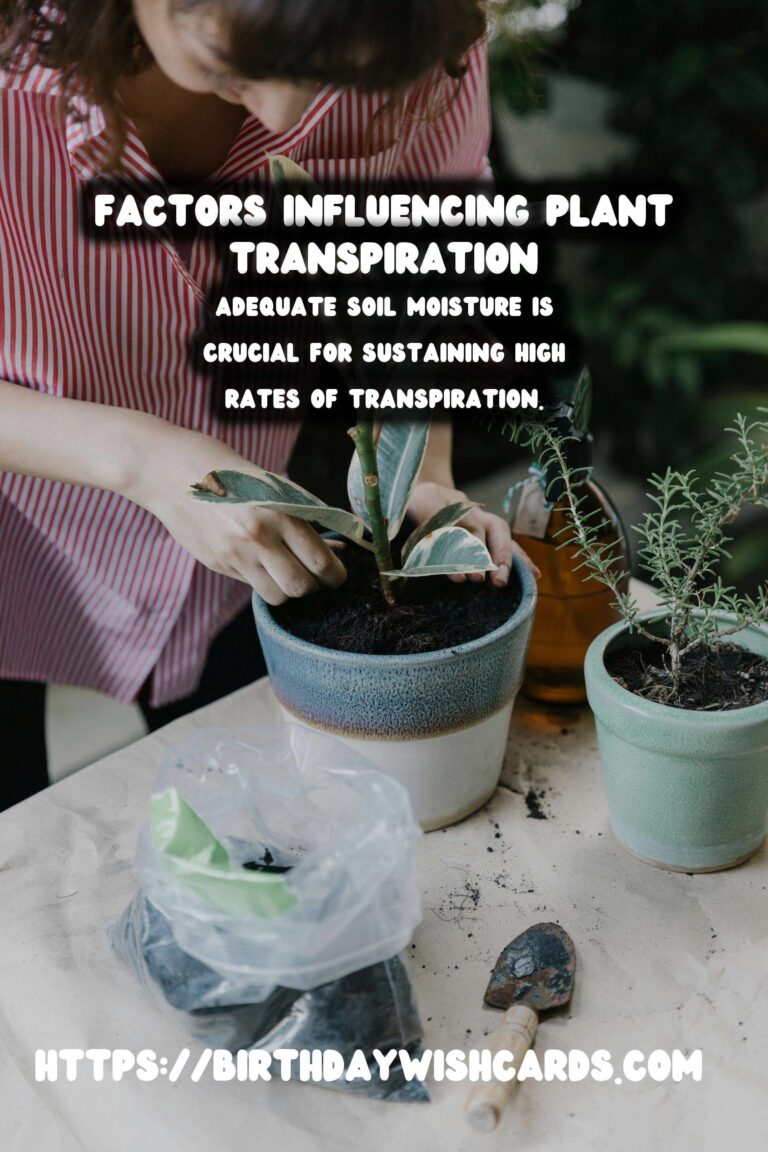
Plant transpiration is a critical process that involves the movement of water through a plant and its evaporation from aerial parts, such as leaves, stems, and flowers. This process plays a vital role in the water cycle and helps plants maintain their temperature and transport nutrients.
What is Plant Transpiration?
Transpiration is essentially the loss of water vapor from parts of plants, especially through small openings in leaves known as stomata. It is a passive process that is principally driven by environmental factors. The water lost by transpiration is replaced by water absorbed by the roots from the soil, creating a continuous flow of water from the roots to the leaves.
Key Environmental Factors Influencing Transpiration
The rate of transpiration in plants is influenced by several environmental factors, each playing a crucial role in how efficiently a plant can manage its water resources.
1. Light
Light is a primary factor that affects transpiration. During daylight, stomata open to allow gas exchange necessary for photosynthesis, which also leads to an increase in water loss. More light typically leads to a higher rate of transpiration.
2. Temperature
Temperature affects the rate of evaporation of water from plant surfaces. Higher temperatures increase the kinetic energy of water molecules, causing them to evaporate more rapidly and increase the rate of transpiration.
3. Humidity
Humidity is inversely related to transpiration. In high humidity conditions, the air is already saturated with water vapor, and thus, the rate of evaporation from the plant decreases. In contrast, low humidity promotes faster evaporation and increased transpiration.
4. Wind
Wind can remove the boundary layer of saturated air surrounding a leaf, increasing evaporation and transpiration rates. A breezy day can substantially increase water loss from plants.
5. Soil Moisture
The availability of water in the soil directly affects transpiration. Adequate soil moisture allows plants to sustain high rates of transpiration, while drought conditions can reduce transpiration by causing stomatal closure to conserve water.
Importance of Transpiration
Transpiration is not only crucial for water movement within a plant but also plays several important roles. It helps in nutrient uptake, cooling plants by evaporative cooling, and maintaining turgor pressure, which is essential for structural stability.
Conclusion
Understanding the environmental factors affecting plant transpiration is essential for agriculture, horticulture, and ecology. By managing these factors, we can optimize plant growth and water use efficiency, leading to more sustainable agricultural practices.
Plant transpiration involves the movement of water through a plant and its evaporation from aerial parts. Transpiration is driven by environmental factors such as light, temperature, humidity, wind, and soil moisture. Light increases transpiration due to stomatal opening necessary for photosynthesis. Higher temperatures increase the rate of water evaporation from plant surfaces. Humidity inversely affects transpiration, with lower humidity promoting faster water loss. Wind can increase transpiration by removing the boundary layer of saturated air around leaves. Adequate soil moisture is crucial for sustaining high rates of transpiration. Transpiration aids in nutrient uptake, cooling, and maintaining plant turgor pressure.
#PlantTranspiration #EnvironmentalFactors #Botany #PlantBiology #Agriculture

